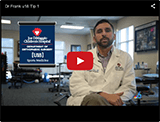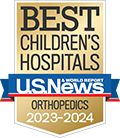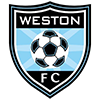Slipped Capital Femoral Epiphysis (SCFE)
Slipped capital femoral epiphysis (SCFE) is a common hip disorder in adolescents causing slippage or separation of the femoral head (ball at the upper end of the femur bone) from the weakened epiphyseal growth plate (growing end of the bone).This condition often develops during the rapid growth period after the onset of puberty, and may affect one or both legs at a time. The separation may be caused by an injury or other factors such as obesity and hormonal imbalances. SCFE commonly occurs in children between 11 and 15 years and boys are more likely to develop the condition than girls.
Causes and Risk Factors
The exact cause of SCFE remains unclear; however, the presence of certain factors may increase the risk of your child developing this condition. These include:
- Obesity: SCFE is more common in children who are obese and have rapid growth. This may be attributed to excess pressure on the growth plate
- Endocrine disorders such as diabetes, thyroid disease and growth hormone abnormalities (acromegaly)
- Kidney diseases
- Radiation therapy or chemotherapy for childhood leukemias
- Steroid medications
- Family history of the disorder
Types
SCFE is classified into two types, stable and unstable SCFE, based on the severity of pain and damage.
- Stable SCFE (mild slip): The condition is considered mild or stable if the child is having pain or stiffness in the knee or groin area but can manage to walk and may limp. Symptoms worsen with activity and subside with rest. In stable SCFE the child is able to walk with or without the help of crutches
- Unstable SCFE (severe slip): Any major blow such as a fall or sports injury may cause unstable SCFE. The child may have severe pain and stiffness that may limit movement. The child may not be able to walk or even put weight on the affected side
Diagnosis
Your doctor will diagnose the condition based on a careful medical history and physical examination where the walking pattern and hip movements will be monitored. X-rays of the hip confirm the diagnosis. Other imaging tests that may be ordered include:
- Bone Scanning: Bone scans help in the early detection of children at risk of avascular necrosis and chondrolysis, common complications of SCFE
- Computed Tomography Scan: Computed Tomography (CT) scans reveal the degree of slippage
- Ultrasonography: Ultrasound scan helps to distinguish between stable and unstable slip
- Magnetic Resonance Imaging Scan: Magnetic resonance imaging (MRI) scan may suggest possible complications such as avascular necrosis
Signs and Symptoms
Children with SCFE will exhibit certain characteristic symptoms that may even help the physician in assessing the type of SCFE. The signs and symptoms of stable SCFE include:
- Stiffness in the hip
- Pain in the groin, the thigh or the knee that lasts from several weeks to months
- Limping while walking
- Restricted movements of the hip
- Outward twisting of the leg
The signs and symptoms of unstable SCFE include:
- Severe pain similar to that felt during bone fracture
- Inability to move the affected leg
The goal of treatment in SCFE is to prevent progression or worsening of the slippage and is accomplished through surgery. Surgery is usually performed within 24-48 hrs of diagnosis.
Surgical Therapy
The surgical procedures available for correcting stable Slipped Capital Femoral Epiphysis include
- Internal fixation (pinning) Bone-graft epiphyseodesis
- Corrective osteotomy
-
Personalized Physical Therapy Puts Bryant Back on the Court
Bryant could hear the whistles blowing as he walked by the gymnasium.
View more -
No off-season for sports injuries
As a new season of school sports and youth leagues gets underway,
View more -
Student Athletes Benefit from Individualized Treatment at U18 Sports Medicine
Becoming involved in a sport is one of the healthiest things that a child can do.
View more -
For young athletes, injuries need special care
More programs are using procedures and surgical techniques tailored for kids.
View more -
Dr Frank u18 Tip 1
 View more
View more -
Segment U18 Tip with Dr Frank 1
 View more
View more -
Dr. Frank’s 2010 WQAM high school football game halftime interviews
View more




 Menu
Menu






 In The News
In The News Hollywood Office
Hollywood Office

![[U18] Sports Medicine](https://www.kidbones.net/wp-content/themes/ypo-theme/images/u18-sports-medicine-performing-arts-logo.png)












